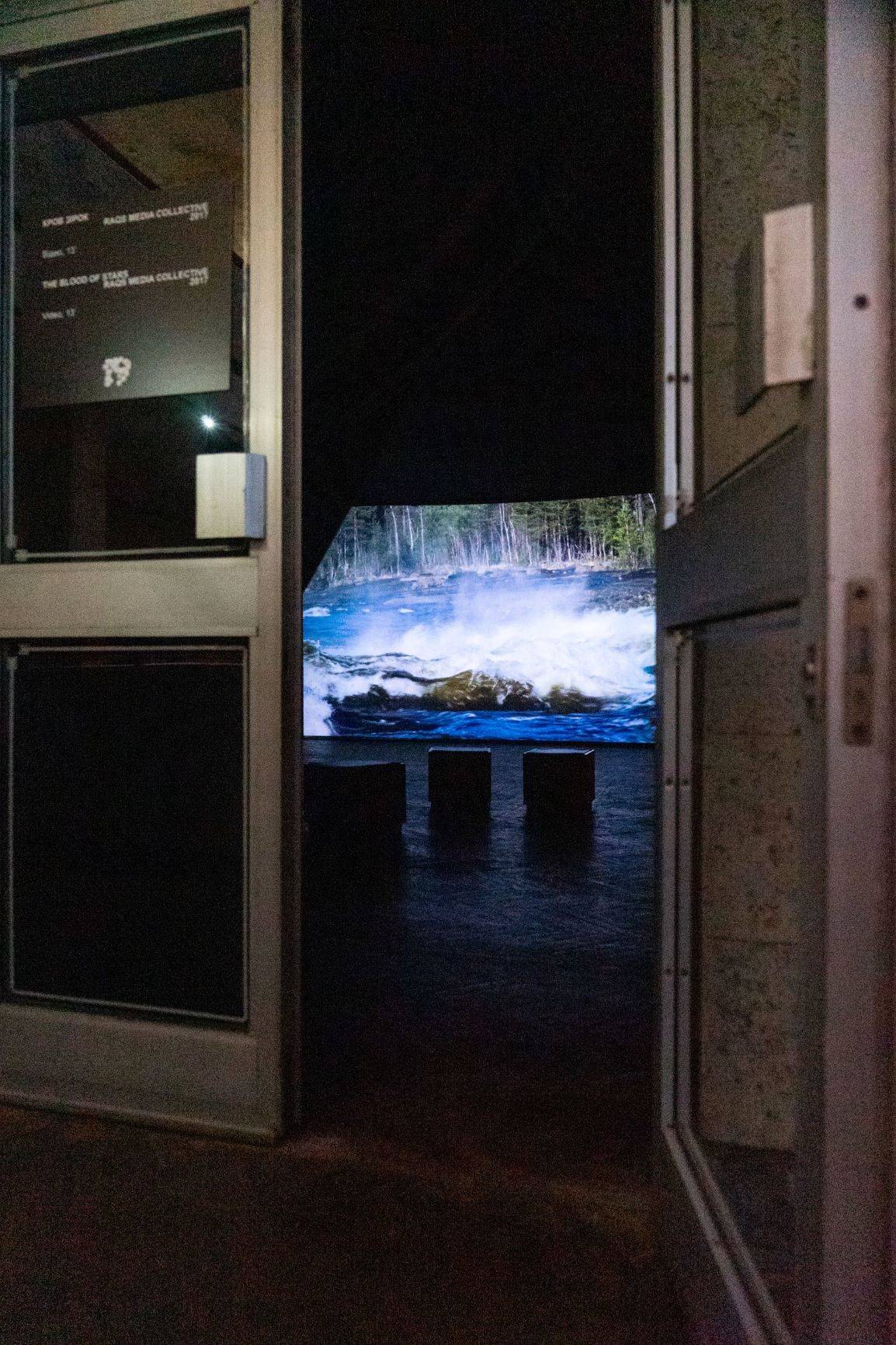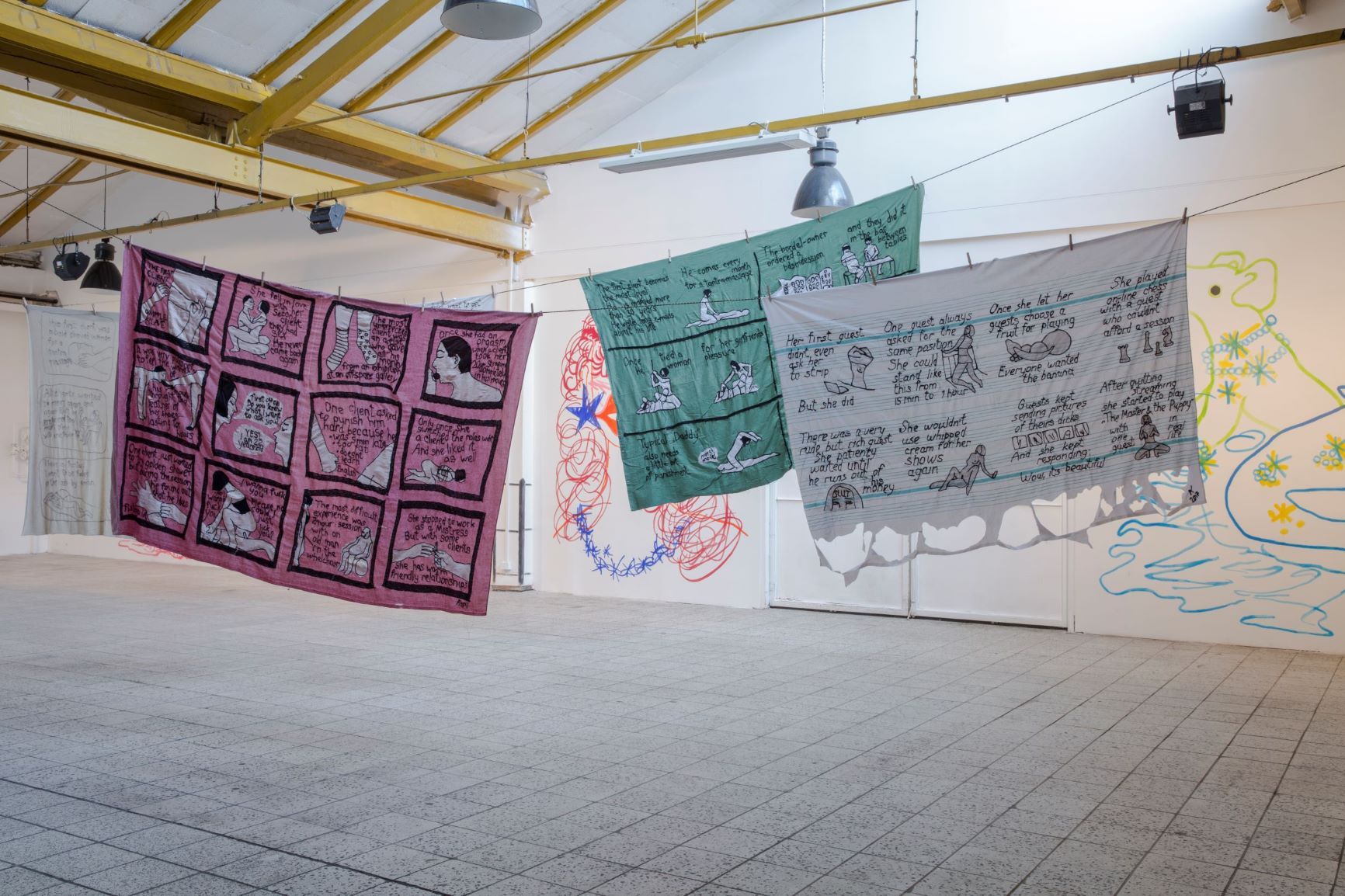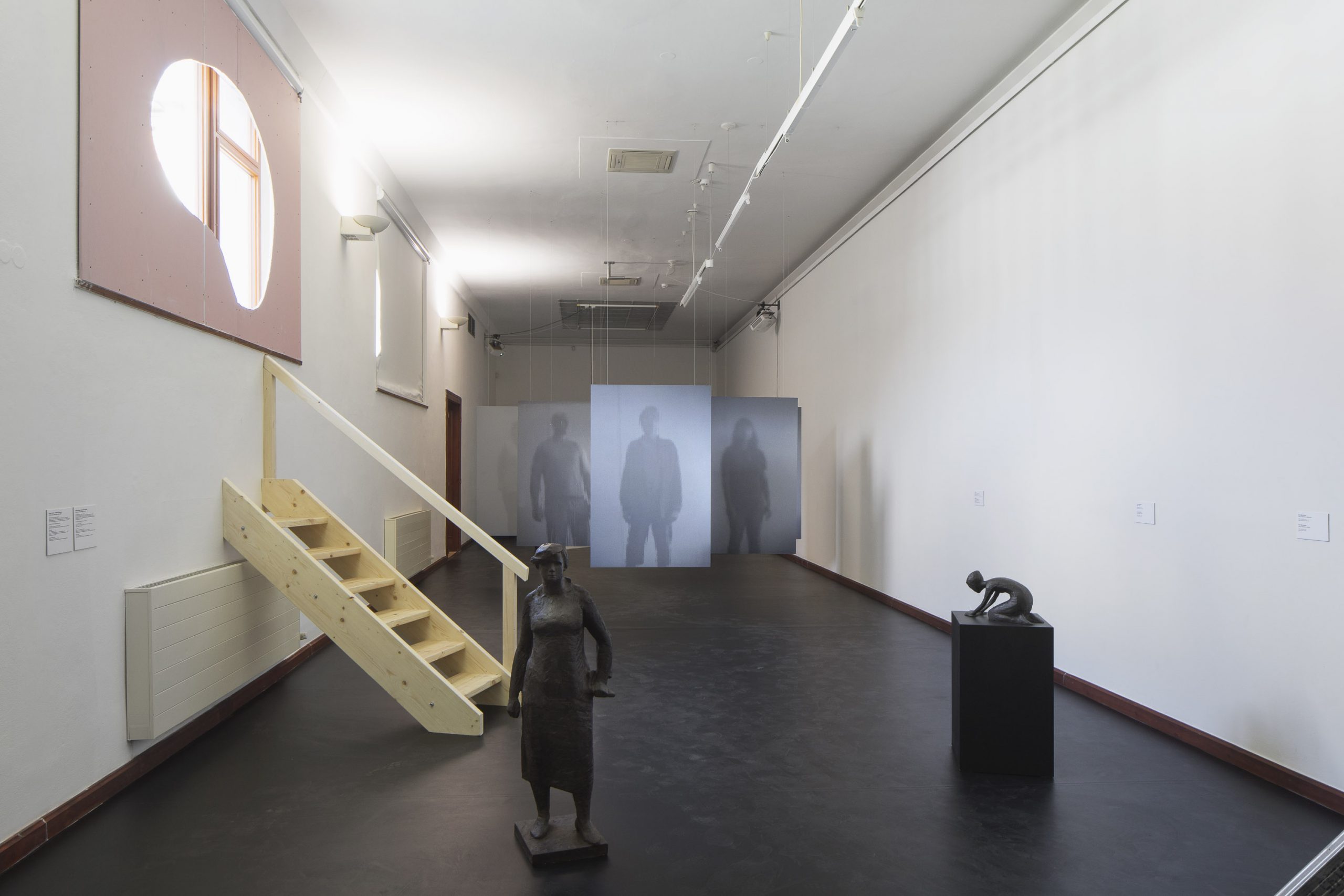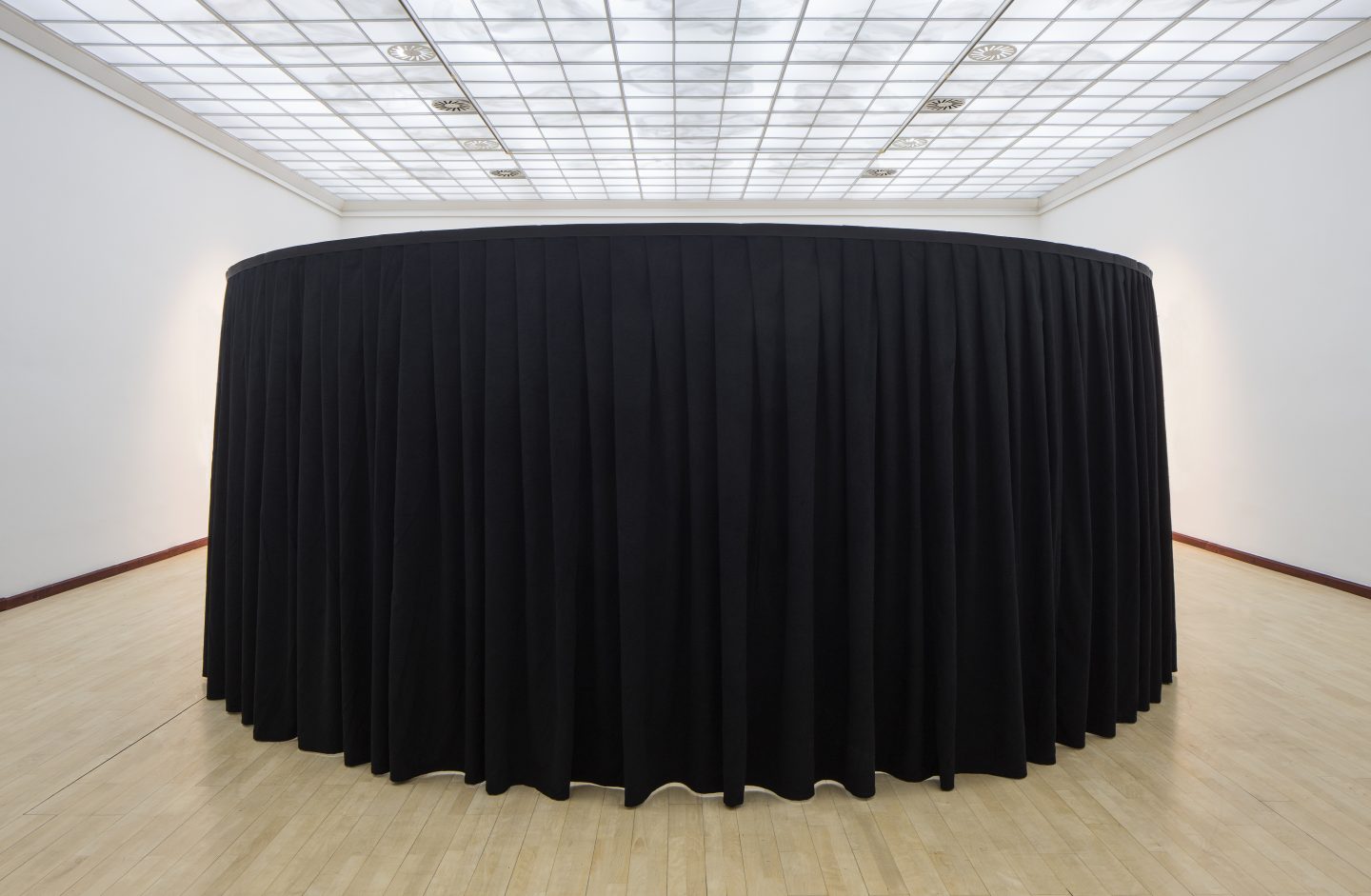Zuzana Jakalová in conversation with the East Europe Biennale Alliance
Zuzana Jakalová: The East Europe Biennale Alliance is a network of four Biennales from Hungary, Czech Republic, Poland and Ukraine. All of them came to life in the past five years. Could you briefly tell us how they came into being, what their aims are and what their institutional background is?
Bartosz Frąckowiak (BF): Biennale Warszawa is a public institution funded almost 100% from the city. In 2017, the city decided to announce the competition for a new kind of institution responsible for creating, organizing and producing a Biennale, but also for a permanent interdisciplinary program.
Marta Michalak (MM): The announcement itself was quite progressive…
BF: …and we won the competition. Our idea was to create an institution that actively engages in social issues and acts against different forms of discrimination, and has been active in several fields – in art and culture, research and theory and activism and politics, and this would link people from these different areas. We started working on the permanent program – the Biennale itself was supposed to be some kind of summary. We started the public program in the beginning of 2018 with some discursive lines; one important block was called Atlas of Planetary Violence and was devoted to shifts that were a result of the decade after financial crisis, like the transnational character of right wing groups or modern slavery. The first official Biennale „Let´s Organise our Future“ took place in 2019. We were trying to design a future we would like and looking for some structured form for creating it.
Tereza Stejskalová (TS): The Warszawa Biennale is the only Biennale in the Alliance that has this City background and support. Our situation and how we came to organize the Matter of Art biennale is very different, even though we share many other things. Tranzit.cz is a long existing institution with a profiled program that has specific audiences at the crossroads of academia, activism and arts, and our audiences usually would combine all these three aspects. Our strategies are informed by feminist tradition and thinking, our aim was not to preach but rather to seduce, to engage through emotions, to communicate first and foremost care in all its complicatedness. Our decision to make a biennale was motivated by the desire to speak with wider audiences and to intervene in public space. We invited artists and include artworks that speak with emotional, bodily language, through affect, about experience that is gender-based, class-based, self-aware of the culture it is coming from. We asked whether art through affect can evoke empathy and solidarity with those we might have nothing in common with in terms of class or gender or culture. We asked questions about public space and what experiences are excluded from it.
Veronika Janatková (VJ): The important partner for us was the City Gallery Prague. It is a very classical exhibition space and one of the biggest in Prague. To realize the Biennale was only possible thanks to their support.
Vasyl Cherepanyn (VCH): The Visual Culture Research Center started long before the Biennial itself, in 2008 as a cultural center in Kyiv. The Biennial came to us first as a side project, but later became a strategy for institutional survival. The Kyiv Biennial started in 2012 and was conducted by the state institution Mystetskyi Arsenal, but eventually was cancelled after the Maidan revolution. We hijacked and rewrote the idea; interestingly, there was no other institution ready to take the responsibility for it. We involved a variety of organizations and institutions from the Kyiv landscape, including universities, museums, galleries, along with institutions inherited from the Soviet times as well as grassroots initiatives and volunteer networks.
Serge Klymko (SK): The first iteration was titled The School of Kyiv and took place in 2015.
VCH: In all the three editions of the Biennial, there was a Kyiv part and other program events unfolding in other cities and places. The city context is really important for us – we always work with Kyiv’s iconic modernist architecture on the level of locations, artworks and programming. The Kyiv International edition in 2017 symbolically pointed at the centenary of the October revolution, and in 2018 we conducted a follow-up called ´68 NOW dedicated to the 1968 events. We tried to re-conceptualize the 20th century revolutionary legacy from the post-socialist / post-Soviet perspective, often contradictory to the Western European one.
SK: It is also important to mention that the Kyiv Biennial, unlike other biennials even in the EEBA network, exists without any city support. We do not rely locally either on the Ministry of culture nor the city council, staying totally unseen to the local authorities because of the whole history of invisibility of the cultural field in Ukraine, especially in Kyiv. Our institutional ground is much more international than local. And VCRC has received almost no local funding throughout its more than 10 years of work.

Eszter Szakács (ESz): For OFF-Biennale, funding is also a crucial question. OFF-Biennale Budapest is a grassroots, bottom-up project – there is no institution behind it. Since 2014, it has been sustained and kept alive by a handful of enthusiastic people invested in creating and sharing contemporary art and culture in the face of many challenges in Hungary today. OFF-Biennale does not apply for Hungarian state funding and steers clear of state-run art institutions. This is a political statement as much as a practical – albeit very difficult – solution to ensure the freedom of artistic expression and strengthen the local independent art scene. The first edition was in 2015 – it was rather a “statement” project, and it involved numerous actors on the independent contemporary art scene. The second edition in 2017 was smaller in scale and had the thematic framework of Gaudiopolis (The City of Joy), drawing on a self-governed children’s republic established in Budapest after the Second World War. The third edition titled Inhale! would have taken place this spring, but it had to be postponed to Spring 2021 due to the COVID-19 pandemic.
ZJ: Why is choosing the Biennale format, in many ways so convenient yet so contested? What did the format offer you?
BF: From the beginning we thought of the Biennial format as a tool or as a strategic name, and the idea was more to hack a Biennale than to create another big artistic event just for a restricted crowd of people from the artworld. Because everybody can recognize what the Biennale is so we can use it as a partizan tool, take the idea and install it in a different context. And to also use it as a tool to link different localities, from Polish ones to those far away from here and see what can emerge from this transnational or translocal collaboration.
TS: The Biennale format gave us an opportunity to establish a bigger institution that would realize and practice different institutional principles that we spent years discussing and formulating, just like non-exploitation of the environment, care, fair wages, etc. It was an attempt to establish an institution in a bigger format and to intervene more in the public space which we saw as a challenge that we wanted to go for. So we thought – is it possible act differently, to be an alternative, critical and self-critical institution on this bigger scale?
VJ: We wanted to change the scale and the format, but we didn’t want to change topics. How to convey the same topics with a different language and to wider audiences?
ESz: For us, OFF is more than just a critical biennial: the biennale format is not an end in itself but a means to realize and sustain OFF’s mission, financially and infrastructurally. The biennial method allows the OFF core team to concentrate resources and attention every other year, building up new strategies each time to realize its programs. As a consequence, OFF has become more concise and more proactive over the course of its previous two editions, and has shifted increasingly towards commissioning and producing projects rather than only presenting them. While in 2015 there were 200 programs in around 100 venues, with artists from 22 countries, the 2017 iteration had 60 venues for its projects and around 150 participants from, again, 22 countries. For the third iteration, OFF focuses on 12 complex, locally rooted projects that OFF-Biennale co-produces and co-organizes.

VCH: The mainstream biennialisation is totally ignoring the conditions of the local peripheral contexts and institutional activities, they just do not fit into its framework. So we basically make an honest step showing that the Biennial today is a completely new reality from what it was even a decade ago. It is grassrooted, politically explicit, operates without state or city support, its curatorial work is mostly done collectively etc. There are lots of institutional practices and constellations that have to be inscribed into the biennial idea today. The Biennial is like a box with instruments – we took it, formatted it and use it as a political tool in the cultural framework.
ZJ: What are the origins and the conceptual framework of the Alliance?
TS: As we wanted to do a different kind of Biennale, we thought – let’s first unlearn the habitual ways of seeing what a Biennale is, and so we organized an international symposium entitled “Unlearning the Biennale” that took place in Prague in 2018. We invited institutions that we thought do exactly this – open up other alternative ways of institution-making through the Biennale format. That’s how we met. We realized that we share some basic thinking about the biennale format and that we share social and political conditions related to our position on the European periphery and that led to a conversation about how we should do something together.
BF: When we spoke to the members of the Alliance well before the idea to connect was on the table, we could hear that even if we use a different language or different terms, there were so many similarities in our approaches and attitudes. We were talking about what doing art in our semi-periphery means, and also what the relationships to other places and other regions should be – not to isolate ourselves in some kind of Eastern European nostalgia or to fetishize this region, but to try and figure out what our links and connections to other regions and other places in the world are.

VCH: It is also an attempt to present an idea of the International in the cultural field. The four biennials that are part of the Alliance are locally very different, but there is a huge commonality between us – we share the same historical background, which is a biennial alliance of (what used to be called) the second world. There is also a different type of political mapping going on that opposes the notion of “Central Eastern Europe” (which is an attempt to erase “easternness” as a “second-class” Europe becoming more “central” and “Western”) as well as the Realpolitik of the EU/non-EU border. We think this remapping is politically very relevant today.
MM: The transnational perspective, understood as working in the international sphere outside the framework of national states, is very important to us. We do not want to make this collaboration part of the national bilateral agreements. In building transnational relations we want to think about the possible liaisons within the region (here the EEBA would be the best example), but also between the regions, sometimes regarded as distant, or worldwide.
ESz: Also, while it is commonly assumed that Eastern Europeans work together and we know each other very well, in reality this is not always the case. The Alliance is an experiment in working together in meaningful ways, beyond just applying together or realizing an exhibition collectively, but also to see how we can really support each other in strategic ways.
ZJ: The idea of the EEBA goes well beyond a standard artworld collaboration. Its aim is to create a space for solidarity, an international network of resilience, a “cultural block” against current social, political and environmental crises, among others. Could you talk about this coming together and the need to organize?
BF: In terms of the changing the very dangerous current political environment and right wing tendencies – thinking about the Alliance meant thinking about a resilience structure that can help each other and support each other in this environment. To create a transnational structure that provides more power in this hostile context.
VCH: Western Europe is now increasingly catching up with and adopting East European authoritarian styles of governance. In this sense, the idea of the Alliance is set up as a contraposition in culture to those ideological trends that further new authoritarianism as a general upcoming prospect. This perspective shows some possible way out that can push us forward, I believe. To make, through the Alliance, some form of the Biennial International’s platform can save us in the future. It is a preparation for the future to come.
TS: As Bartek and Vasyl mentioned above, the Alliance is grounded in our status of being on the European periphery, our socialist past and our desire to reassess it, to re-discover and make present what was repressed in this past. Also the notion of solidarity is very important to us. How to really build a solidarity structure, how to actually share resources, how to work together? How is it possible to redistribute resources and privileges among ourselves? How to share problems? How to find productive ways to help each other?
ZJ: Do you discuss questions of power? I imagine creating such a strong Alliance can mean creating a very powerful structure in both a positive, and a negative sense.
BT: Personally, I think if we really manage to create this kind of power structure and have an impact on the regional art and intellectual scene, it would be great! (laugh) But unfortunately, that is very far away from where we are just now. We spoke a lot about institutional critique and organizing, and my point is that we should rather accelerate than slow down. Maybe we should speed up now and organize ourselves and have a certain power to really be able to answer, to react to this political situation, because on the other side we have a very well organized transnational right wing structure.
TS: I couldn´t agree with Bartek more on the power matter. If the goal of the Left is to have a dignified life for as many as possible, we have to be as numerous as possible. Otherwise it is a dream that will never come true. Politics is intimately related to everything we do. Someone accused us some time ago of struggling for hegemony and fighting for power. Yes, we do! (laugh) We do fight for these positions in the art world but only in order to change something, in order to share and discuss ideas and values.

VCH.: With regard to the Alliance, the idea of power is also about getting more cultural domination. We joined our forces as the biennial institutions defined by and defining cultural context in the respective capitals to gain more visibility, bridging the municipal level with a regional, internationalist approach.
ESz: I would say that it is not cultural “domination,” but that the Alliance enables a force coefficient, namely, that we are stronger together than on our own.
ZJ: We already discussed the conceptual visions of the Alliance, what are the upcoming practical next steps?
VCH: The idea is that the member biennials, apart from conducting their own programs, within the Alliance conceive and present joint programming, producing crossborder meetings, public events and working out a common agenda for the next years. It is important that the Alliance presents itself as an independent meta-subject – in a political sense, it’s a practical way to think and act beyond the nation-state.
ESz: In very practical terms, we also need to learn to work together as an alliance: how not to be “only” the sum of biennials (as in a federation), but how we can create a novel structure in our collaboration.
VJ: The nearest program is happening now during the Matter of Art Biennale in Prague, where we wanted to discuss institutional art practice – as we called it – in the postcorona (art) world. How do we operate, how do we collaborate, and how do we build alliances in the current political and economic conditions? And as a lot of our plans actually emerge from meetings in person, we will see.




